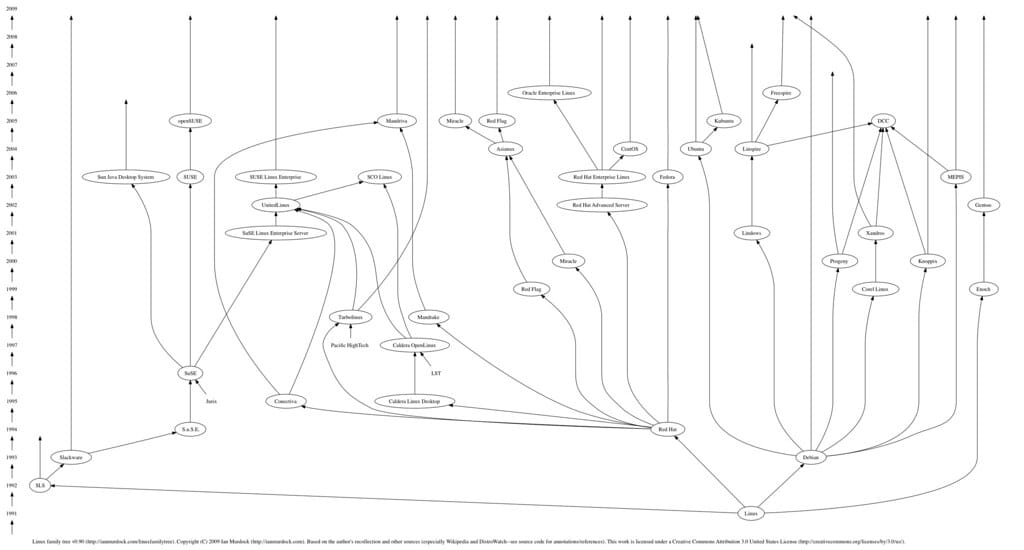The Quiet Decline: Why Linux Distributions Keep Disappearing and What It Means for the Open Source Ecosystem
Another beloved Linux distribution has announced its closure, marking yet another chapter in the ongoing story of consolidation within the open source operating system landscape. As we witness the gradual shrinking of the Linux distro ecosystem, it's time to examine what's driving these shutdowns and what they signal for the future of Linux diversity.
The Numbers Don't Lie
The Linux distribution landscape has been quietly consolidating for years. According to DistroWatch, which tracks Linux distributions, the number of actively maintained distros has declined by approximately 15% over the past five years. What was once a thriving ecosystem of hundreds of distributions has gradually winnowed down as smaller projects struggle to maintain momentum.
This trend isn't just about obscure, single-developer projects either. We've seen established distributions like antergos, Korora, and Manjaro-based projects shut their doors despite having dedicated user bases and years of development behind them. Each closure represents not just the end of a project, but the consolidation of users toward larger, more stable distributions.
The Hidden Costs of Maintaining a Distribution
Creating a Linux distribution might seem straightforward – after all, it's largely about packaging existing open source software. However, the reality is far more complex and resource-intensive than most realize.
The Maintenance Burden
Modern Linux distributions require constant attention across multiple fronts. Security patches must be evaluated, tested, and deployed regularly. Package dependencies need careful management to prevent system breaks. Hardware compatibility requires ongoing testing and driver integration. For smaller teams, this workload quickly becomes overwhelming.
Consider the mathematics: a typical Linux distribution contains thousands of packages, each potentially requiring updates multiple times per month. Even with automated tools, the testing and quality assurance process demands significant human oversight.
Community Building Challenges
Technical challenges aside, building and maintaining a community presents its own hurdles. Users expect responsive support, comprehensive documentation, and regular communication from maintainers. Social media presence, forum moderation, and user education all require time and energy that volunteer developers often lack.
The most successful distributions have learned that community management is as crucial as technical development – a lesson that many smaller projects learn too late.
The Consolidation Effect
As smaller distributions disappear, users naturally migrate to larger, more established options like Ubuntu, Fedora, Debian, and Arch Linux. This creates a self-reinforcing cycle: larger distributions gain more users, which attracts more developers and resources, making them even more stable and feature-rich.
This consolidation isn't necessarily negative. Larger distributions can offer better security response times, more comprehensive hardware support, and greater long-term stability. However, it also means less experimentation and fewer alternative approaches to solving common problems.
Innovation vs. Sustainability
The tension between innovation and sustainability lies at the heart of many distribution shutdowns. Many distributions start as passion projects aimed at solving specific problems or serving niche communities. However, sustaining that innovation requires resources that passionate individuals often can't provide indefinitely.
Some distributions have found middle ground by repositioning themselves as specialized spins or variants of larger distributions, maintaining their unique character while leveraging the infrastructure and community of established projects.
What This Means for Linux Users
For everyday Linux users, distribution consolidation brings both benefits and concerns. The benefits include more stable software, better hardware support, and stronger security practices from well-resourced teams. The downsides include reduced choice and potentially less innovation in user interface design and system management approaches.
Users currently running distributions that show signs of decline should consider migration strategies sooner rather than later. Waiting until a distribution announces its closure can lead to rushed decisions and data migration challenges.
The Path Forward
The Linux ecosystem's evolution toward fewer, more robust distributions may be natural and healthy. Rather than viewing these closures as failures, we might see them as the ecosystem maturing and finding sustainable models.
The open source community continues to thrive through contribution to larger projects rather than creation of entirely new distributions. This approach may ultimately serve users better by concentrating development efforts on improving existing, stable platforms rather than fragmenting resources across numerous smaller projects.
As another distribution prepares to shut down, it serves as a reminder that in the open source world, sustainability often matters more than novelty – and sometimes, letting go is the most responsible choice a project can make.
